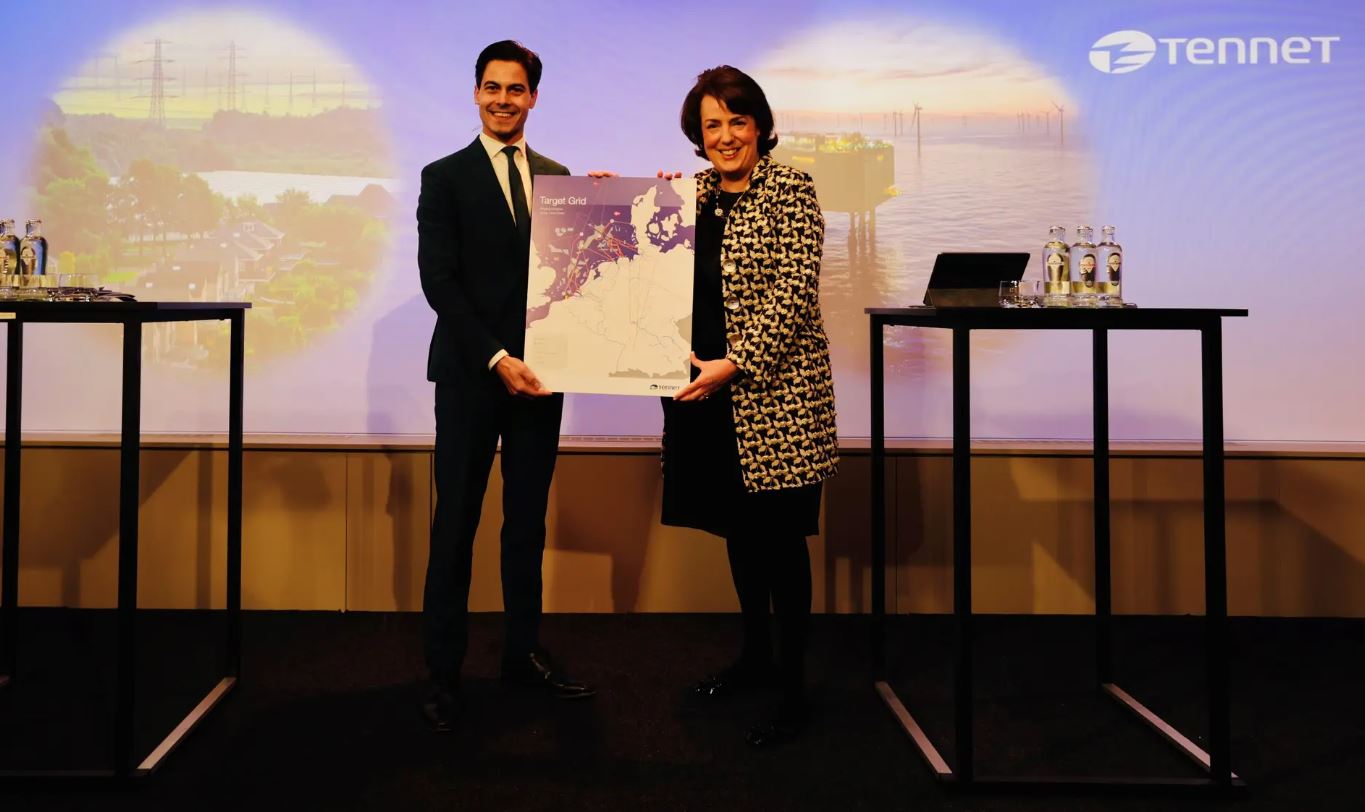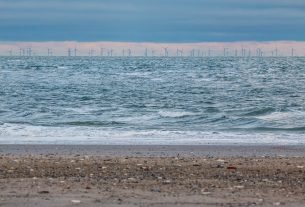The Netherlands – TenneT introduces Target Grid, a novel concept designed to meet the enormous problems of the energy transition.
The goal is to have an electricity system in place by 2045 to support a thriving, sustainable economy, with adequate green electricity for everyone, from consumers to business. The initial Target Grid version, including the corresponding grid map for 2045, was submitted to Rob Jetten, Minister of Climate and Energy Policy.
TenneT proposes a network of DC (direct current) superhighways and energy hubs, a DC grid (electricity superhighways), and a considerably upgraded existing AC (alternating current) system with Target Grid. This network of energy hubs, linked by superhighways, would ensure that renewable electricity can be carried vast distances from the North Sea to consumers and industry, while also ensuring the reliability of the electricity grid. The handover to Minister Rob Jetten signals the beginning of a collaborative engagement with all stakeholders to further design the Target Grid.
Offshore wind energy
Both Germany and the Netherlands face enormous and similar challenges: more than doubling of electricity consumption, five to ten times larger generation capacity, significant levels of required flexibility, and, for each country, approximately 70 GW of offshore wind energy that must be delivered as efficiently as possible to industries and households in the Netherlands, Germany, and other European countries. To get these vast amounts of electricity to the correct spot in the future, a new approach is needed to build the high-voltage grid of the future in a timely manner.
Target Grid scenarios
Target Grid is based on the Netherlands II3050 (Integrated Infrastructure Study 2030-2050) and the German NEP2023 greatest electrification scenarios (Grid Development Plan). As a result, the Netherlands and significant parts of Germany will end up with a network designed to support a totally renewable energy system that is resilient enough to provide supply security. Target Grid enables the North Sea to become a truly sustainable green centre for electron supply at the core of Europe’s energy revolution.
Target Grid is committed to accessing the North Sea as efficiently and effectively as possible as the most important source of renewable electricity for the Netherlands, Germany, and the North-western European region.
Germany’s offshore capacity (70 GW) will be required for domestic electrification. Because the Netherlands can cover its domestic demands for power and hydrogen with 52 GW of offshore wind capacity, its anticipated 72 GW offshore wind capacity and great links with other nations provide additional options and advantages. At low wind speeds, the security of supply for Dutch residents, businesses, and industry remains high, but at high wind speeds, economic gains can be realised on the electricity and hydrogen markets. The Netherlands will export electricity at times and import electricity at others, exactly as it does now.
Going forward
TenneT is launching a dialogue with stakeholders to further develop Target Grid with the presentation of Target Grid. Five fundamental values are at stake here. First, a coherent North Sea country strategy 2050 with clear agreements between North Sea countries is needed. Furthermore, extra placement policy is required to build energy demand centres in strategic areas. Next, timely licencing is required to create the energy corridors contained in Target Grid by TenneT.
Furthermore, an adjustment to the power market model is required to promote cross-border trade of offshore wind generation and to properly distribute the costs associated with this. Finally, TenneT views the supply chain for crucial infrastructure components under stress due to the world’s high offshore wind goals and the restricted supply of critical components, (dock)yards, installation vessels, and labour. TenneT advocates a (European) coordinated plan to provide enough and stable supply chain capacity throughout time.




